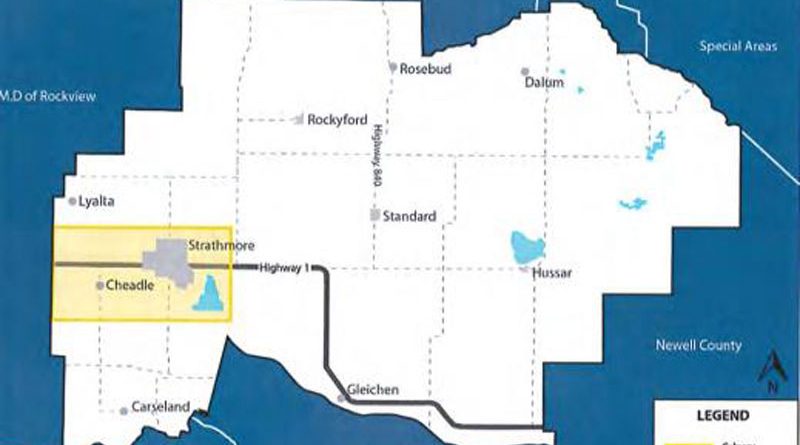MDP and land use amendments ready for public hearings
By Sharon McLeay Times Contributor


Photo Courtesy of Wheatland County
Approval was given for first reading of bylaw 2018-01. The MDP is used to give long-term planning direction to county council and administration on land use and development, projected over a 30-year period, with reviews of the plan every five years.
“There are quite a few sections we are trying to amend to align with the Calgary Metropolitan Region Board,” said Kim Sandbeck, Wheatland County development officer.
The amendment brings Wheatland’s MDP into compliance with Municipal Government Act changes that went into effect this past January. The changes mandate any requirements issued by the Calgary Metropolitan Region Board (CMRB) must be met. Until the regional plan is complete within the next three years, the interim growth plan will be set in 2018 and used to act as a bridge to the CMRB-finalized plan and keep land matters moving.
“Once the actual plan comes into effect, we may have to change this plan slightly, as we don’t know what the servicing is going to look like in particular,” said Sandbeck.
While the MDP guidelines are not set in stone, it is the guiding mechanism for council to make land use decisions in the county and requires adherence to certain regulations.
“The MDP is binding on the subdivision authority and binding on the subdivision appeal boards in appeals,” said Sandbeck.
An integrated community sustainability plan (ICSP) that considers the economic, social and cultural aspects in the county is a part of considerations under the MDP.
Included in the new amendments is a new map identifying Wheatland County areas that fall within the CMRB plan area. The objectives of the metropolitan growth and servicing plans are also included. A revision to the hierarchy of decision making was adapted, to include provincial and municipal hierarchy. A section for conservation reserve lands was also added.
Sandbeck said staff also updated the plan to include the finished South Saskatchewan Regional Plan (SSRP). The SSRP advocates for an efficient use of land policy by minimizing land used for urban purposes, encouraging high density in residential redevelopment areas, prioritizing development where services are already present, and tailoring land use to reduce travel between residential, commercial and industrial areas.
Amendments to the land use bylaw 2018-06 also passed first reading. The majority of these amendments also align land use with the 2018 Municipal Governance Act requirements.
One area in the bylaw deals with definitions and what factors determine an incomplete and complete application, with a detailed breakdown of elements required for a subdivision and development permit application.
“We have included those requirements, such as what would be identified on a site plan and digital copies … things like that,” said Sandbeck.
One specific amendment sets that medical marijuana production sites are clearly confined to the west highway structure plan.
Subdivision bylaw 2018-08 was the third part of the bylaw trifecta and it was given third and final reading. This bylaw deals with the establishment of a subdivision appeal board and lists definitions pertaining to subdivisions and appeals, the addition of an appointed clerk, clarification of their role, and a few changes to the operations of the board and information on appeals.
